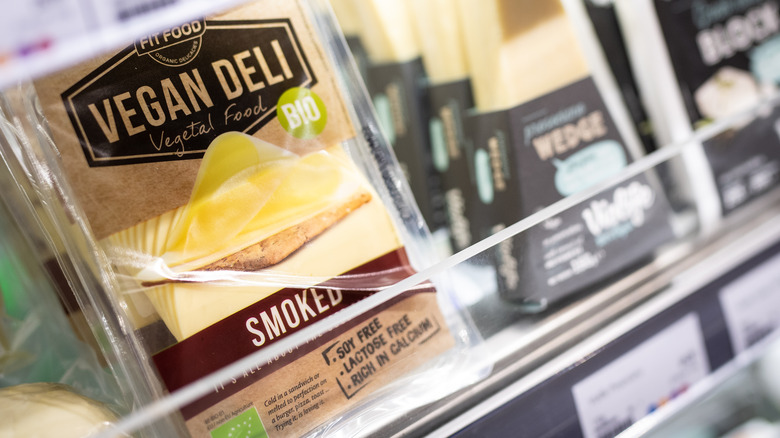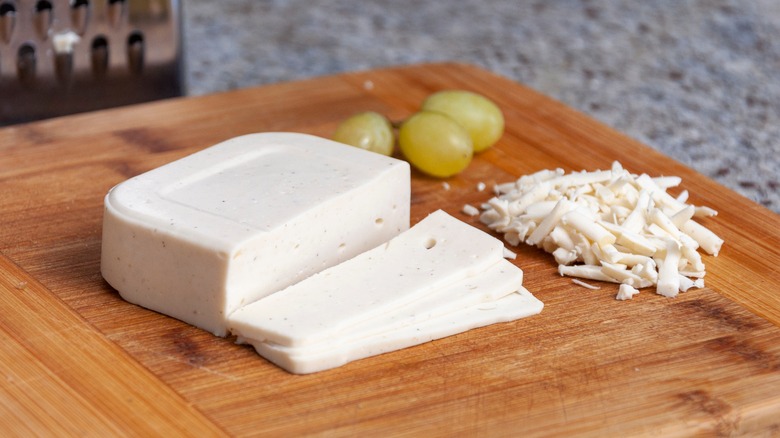Why Doesn't Vegan Cheese Melt Like Regular Cheese?
A juicy cheeseburger hot off the grill, mac and cheese right out of the oven, wood-fired pizza, a plate of fresh nachos ... the common denominator in all of these delectable dishes is ooey, gooey melted cheese. Whether it's fresh mozzarella, gruyère, or aged cheddar, that stringy, stretchy, bubbly goodness is the highlight of so many meals.
Sadly, of all the flavors and textures that can be replicated in a plant-based option, melted cheese is not one of them. Vegan cheeses have gotten increasingly better in terms of taste and complexity, but the melting component has been difficult to mimic (via Eater).
If you've ever topped an Impossible or Beyond burger with a slice of vegan American cheese, you'll notice it doesn't melt as well as a Kraft single, no matter how much heat you blast it with. The reason for this, according to The Takeout, is that vegan cheese lacks casein, the protein that causes regular dairy cheese to melt.
Why doesn't vegan cheese have casein?
Casein may be a protein, but you can't just substitute the casein in cheese with another protein, the way you can with plant-based meat. As Wired explained (via YouTube), casein's molecular structure is much more complicated than any other type of protein. "If you were able to go to a really fancy microscope, you would be able to see these casein balls," scientist and cheese researcher Inja Radman told Wired, "but within that ball, we have no clue how these caseins behave or aggregate, or what their actual shape or form is."
This complicated structure, along with the fact that casein is a naturally occurring protein only found in animal milk, makes the consistency of cheese difficult to replicate in a non-dairy fashion. The Beet further elaborates that casein combined with whey is what turns milk into curds and eventually into cheese that can melt, stretch, and bubble when heated. Without casein, cheese may look and even taste similar, but it won't melt the same.

